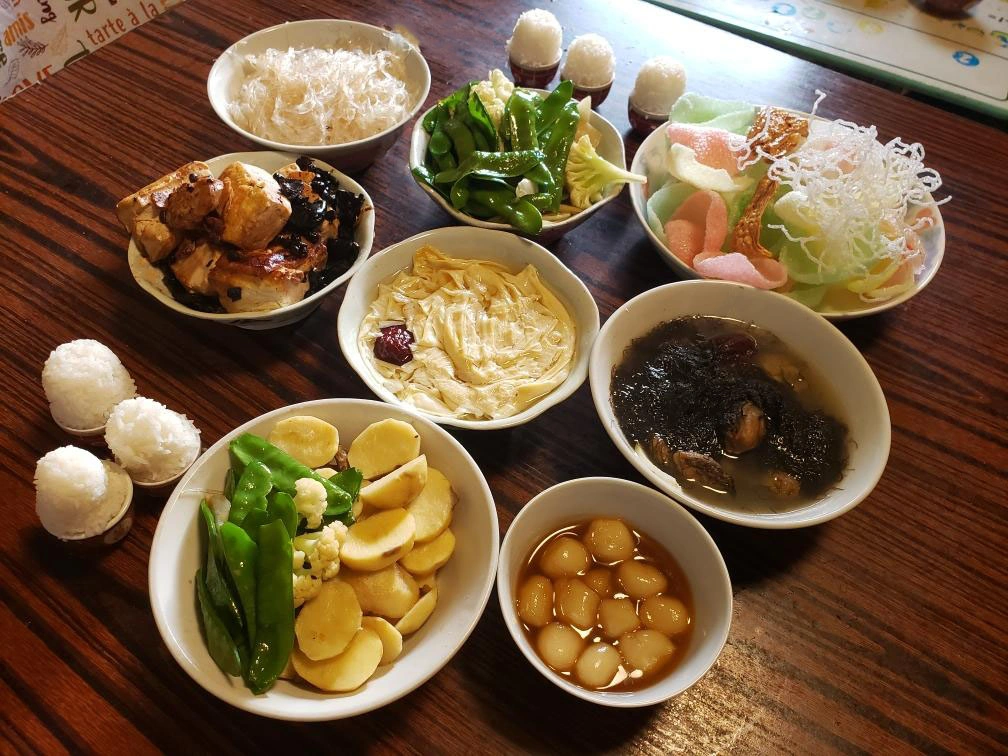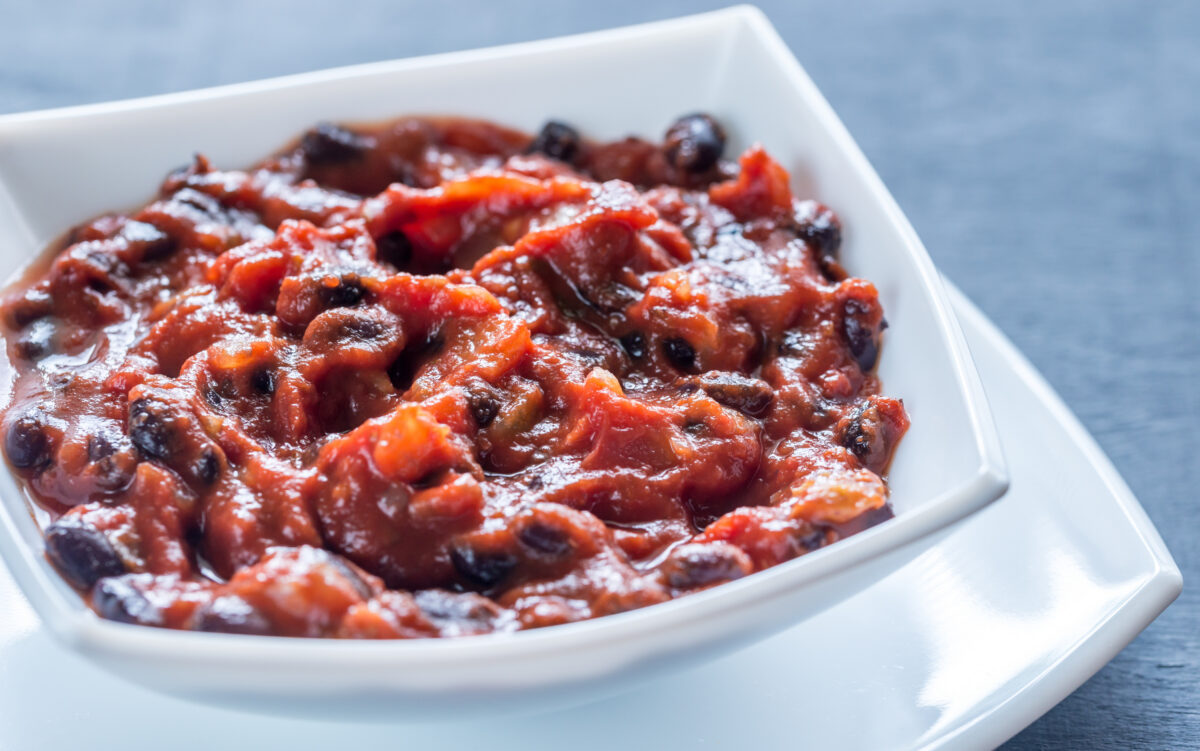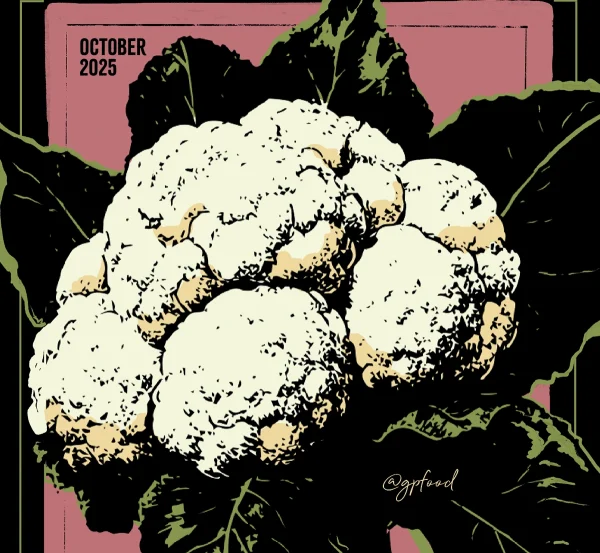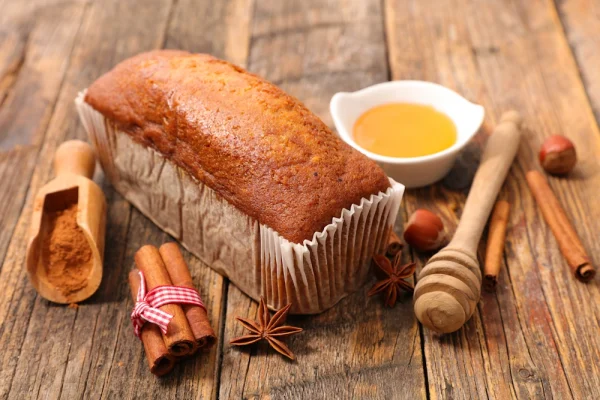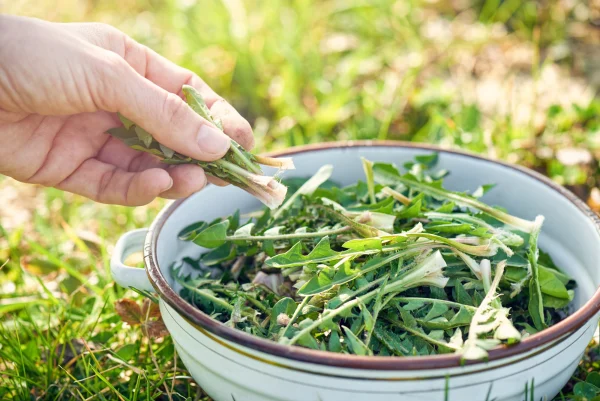
Last month, we unleashed joy in the most epic way at our 40+4 Anniversary Celebration at our Bronx HQ. We invited our partners, collaborators, clients, vendors, and more to join us as we celebrated 40 (plus 4) years of being of service, delivering deliciousness, and helping others celebrate their milestones.
From the moment our guests arrived at our building – by car or by foot – they knew they’d arrived at the right place when they saw the large graffiti mural by Scratch decorating the front of the building and were greeted with the The Marching Cobras Drumline and Danceline who dazzled with energizing drums and electrifying dance.
Guests quickly checked their coats and stepped into Mae Mae Café and Plant Shop where they enjoyed live jazz music from Jazz at Lincoln Center and got their first bite and sip of the day – a Berry Beet Shot and some Carrot Tartare – before they embarked on a tour of our space.
We had so much to share with our guests! They started with the first floor commissary that starts on the south with the loading dock for incoming ingredients, goes through various walk in refrigerators, cold kitchens and hot kitchens, blast chillers, and pack out refrigerators to the out going loading dock. Inside the production kitchen which was still bustling with activity, they enjoyed some bites highlighting our production lines. The Sauce line presented Butternut Squash Soup with Truffled Croutons; the Starch Line presented Twice Baked Potato Gruyere Bites; and the Vegetable Line presented Eggplant Meatballs.
A fan favorite at our venues and at our 40th was a guest appearance from our friend and partner, Charles’ Pan Fried Chicken who served bite-sized portions of his Chicken Slider, Catfish Slider, and Cornbread.
Guests then headed up to the third floor, home to our administrative offices and pastry kitchen, where they had a photo moment in front of our mural painted by Crash, peeked in at the Sylvia Center and the Design/Marketing Offices before continuing through the main office to the Pastry Kitchen where they grabbed one of our incredibly delicious chocolate chip cookies.
A quick hop down to the second floor, they had the chance to see our Design Warehouse, a cave of wonders packed with all the essentials to turn an event into a party! Walking past our Subway Mural created by Scratch (complete with subway audio!), they stepped into our 2nd Floor Event Space! We transformed the open space into a swanky lounge with bars, food stations, a demo area, and a seated lounge.
Warm, friendly staff members greeted guests and offered a selection of our most popular hors d’oeuvres including House Made Kosher Pigs in a Blanket; Smoked Salmon Napoleon; Tuna in a Birds Nest; Mushroom Mole Tostada; Habanero Smoked Tofu Taco; Red Pepper Puffed Tortilla; Fluke Ceviche; Goat Cheese Bonbon; Beet Terrine; and Boneless Lamb Chop.
Guests wandered around the space, learning about our Exclusive Venue Partners and Nonprofit Partners (and how to support them); learning more about our history through our wall of Iconic Moments; adding their tags to a graffiti wall by Scratch; becoming experts in napkin folding with Kevin Horne, a long-time member of our event team; slinging cocktails with our mixologist Daniel Dougherty; and learning how to use vegetables in place of meat with Chef Andrew Smith.
We made sure everyone stayed hydrated throughout the event with our bar station and beverages from our partners at Dio. And of course we made sure that everyone left full of delicious treats from stations representing the breadth of our menus and partners.
At Katchkie Deli, named after our organic farm in upstate New York and featuring a vegan take on the classic NY Reuben with a Pastrami Cured Butternut Squash on Herbed Focaccia.
We shared our Momofuku Station, a collaboration with Momofuku to prepare and share their recipes at events, sharing Charred Eggplant Dip; Tingly Lamb; Chilled Spicy Noodles; Ginger Scallion Noodles; Spicy Pork Rice Cakes; Wagyu Ragu Rice Cakes; Shiitake Bao; Brisket Bao; Bing Bread.
Our friends at Russ & Daughters hosted a station featuring Bagel Chips; Latkes; Wild Alaskan Salmon Roe; Trout Roe; Smoked Salmon.
We worked with JJ Johnson to bring FIELDTRIP to the party with their fan favorite Short Rib & Carolina Rice Bowl and Quinoa Falafel & Wild Rice Bowl.
We rounded out the menu with our Pan African Station serving a variety of dishes that represent different regions across Africa: Chapati (East African Flatbread); Zaalouk (Moroccan Vegetable Dip); Burkina Faso Chicken Brochette; Senegalese Jollof Rice; Khudraat Mashwiyya (Moroccan Spiced Roasted Vegetables); Kelewele (Ghanian Sweet Plantain); and Tanzanian Tofu Curry.
We were thrilled to receive a number of citations and proclamations including a Citation of Merit from Vanessa L. Gibson, President of the Borough of The Bronx; and a proclamation from Mayor Eric Adams declaring March 11, 2024 Great Performances Day in New York City!
It was an incredibly joyous event, and we lived up to our Mission of Unleashing Joy through Genuine Hospitality. We love throwing parties with our clients; and we love even more having them over at our own home and throwing a party for them!
40+4 Video
Video credit: Hechler Photographers
Great Performances Through the Years
Gallery images credit Hechler Photographers
By Steven Moskos, Director of Staffing & John Gargano, Director of Service.
Service is at the core of who we are at Great Performances, and an important component of what we look for when we hire anyone, from our back of house and administration teams to our front of house and service teams. At every level, we should have a service and hospitality mindset.
Alongside the event venue and décor, the service helps sets the tone for an event. When guests attend a Great Performances party, they should feel welcomed and taken care of by every member of our team. Steven Moskos, our director of staffing, and John Gargano, our director of service, work closely to ensure our service staff have the training they need to hone their hospitality instincts and deliver exemplary service.
“At Great Performances, everybody receives comprehensive training as part of our 360-degree approach to transformation,” comments Gargano.
Training begins at onboarding and continues throughout a staff member’s tenure at GP, whether they’re adding new skills, learning the ins and outs of an event venue, or changing positions. As we kick off each season, we’ll also host training sessions to reinforce the essential skills necessary to produce successful events and that help them progress in their careers. We also take the opportunity to train new Service Leads and Captains, who will be added to our roster of leadership throughout the upcoming season. New hires and captains will embark on training shifts at actual events, where they get to grow in their skills through practical experience.
“We pride ourselves on giving staff the keys to their own success,” Moskos shares. “Through these trainings, staff who want to grow with us are given the skills they need at every stage to excel.”
Off season training sessions are refresher courses and professional development courses including Buffet, Tasting, and Private Home Service Skills and venue-specific trainings.
Our training program comprises classroom-style instruction, hands-on practice sessions, and role-playing exercises that use real-world scenarios. Through repetition and employing a variety of techniques that appeal to different learning styles, we ensure that all team members acquire the skills and mindset to provide the highest levels of professional, friendly, and warm service.
Learning the basics of service and building muscle memory allows our staff to practice empathy, attentiveness, and adaptability as they interact with guests and encounter different situations. More than just training our team members on skills, we focus on the qualitative aspects that turn service into genuine hospitality. We encourage our staff to look for non-verbal cues that can help them anticipate client and guest needs and deliver an experience that exceeds their expectations.
Throughout the training, our service pillars of Presentation, Teamwork, Knowledge, Service, Leadership, and Personality are highlighted, all of which drive our mission at Great Performances: Unleash Joy through Genuine Hospitality.
We’re delighted to share that Liz Neumark, Founder & CEO of Great Performances, has been voted onto the Board of Directors of New York City Tourism + Conventions.
New York City Tourism + Conventions is the official destination marketing organization (DMO) and convention and visitors bureau (CVB) for all five boroughs of New York City. Their mission is to invite the world and energize NYC, building equitable, sustainable economic prosperity and community through tourism for the mutual benefit of residents, business, and visitors.
Their focus on strategically driving leisure travel and business events in NYC have made a significant impact for their members and for NYC across all five boroughs. Their efforts across numerous communications channels have reached millions of travelers and potential visitors, helping drive an increase in conventions and tourism increasing leads and business for NYC.
In 2023, visitors who travelled 50 miles or more or spent one night in NYC increased to 61.8 million people, 93% of the record 2019 total. NYC is on track to welcome 64.5 million visitors in 2025 and to exceed pre-covid highs in 2025. This yields $74 billion in economic impact and 380,000 jobs.
A longtime member of the organization, Liz is proud to join a group of other industry leaders who are committed to the growth and success of NYC travel and tourism.
To learn more about the Board of Directors, please read the press release here and to learn more about the impact of NYC Tourism + Conventions, visit their website here.









